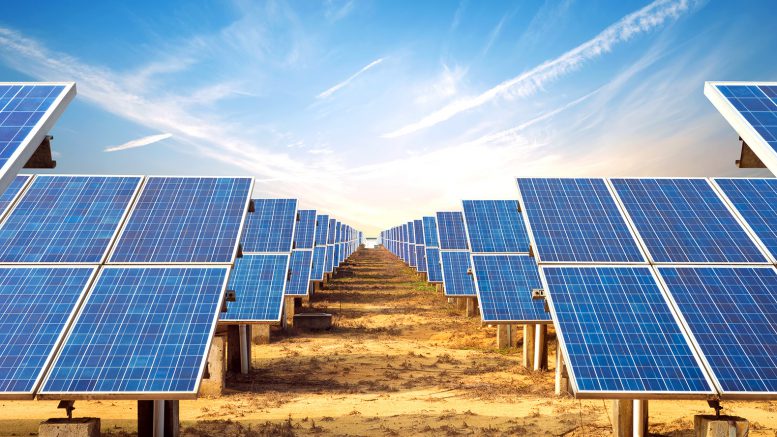Over the next fifteen years, the share of renewable energy in the Middle East may increase more than threefold. And all this thanks to the impressive photovoltaic projects. Falling costs, healthy competition, fluctuating oil prices and the ever-growing demand for electricity are factors that contribute to the further impressive growth of solar energy in the region.
Some reports indicate that in the Middle East, the share of renewable energy sources is expected to double from 5.6% in 2016 to 20.6% in 2035. Achieving such goals will require significant investment in renewable energy projects in the region.

The world’s largest photovoltaic power plant is already located in Abu Dhabi and this is just the beginning. The United Arab Emirates and Saudi Arabia remain at the forefront of large-scale photovoltaic projects on an industrial scale, and neighboring countries are pursuing them. Most countries in the Middle East now have ambitious national renewable energy targets.
A large project is currently under construction for a photovoltaic power station in Abu Dhabi in the United Arab Emirates. Its capacity will be almost 1.2 GW. The next part of the project will be commissioned later this month. Upon completion of the investment, it is expected that it will become the world’s largest photovoltaic plant. It is assumed that the power plant will be able to generate enough energy to provide nearly 200,000 homes.
The third stage of Mohammed bin Rashid’s Solar Park is 75% of renewable energy in Dubai! Dubai, thanks to Mohammed bin Rashid Park, currently has the world’s largest sunny park. Due to this, Dubai by 2020 should reach 7% of clean energy, and by 2030 – 25%.
While most of the renewable energy facilities installed by 2030 will be produced as part of the development of Mohammed Bin Rashid Solar Park, Dubai has set another goal – to produce 75% of its energy from renewable energy sources by 2050.

RES is a way to reduce energy prices. While large utilities are dominant in the renewable energy industry in the region, companies operating in the Middle East are looking for ways to reduce their electricity costs, since the governments of the countries in the region are abandoning fossil fuel subsidies.
Saudi Arabia has set itself an ambitious task of adding 9.5 GW of renewable energy by 2023, and it is expected that next year it will offer 3.25 GW of photoelectric energy.
Oman seeks to reach 10% share of renewable energy by 2025. He recently announced a second solar project with a capacity of 500 MW-1 GW. It is expected that work on it will begin by 2021.
Egypt remains an active market. The success began thanks to about 1.5 GW of solar projects. At the end of last year, Egypt announced an auction for the construction of a 600 MW power plant in the West Nile region.


